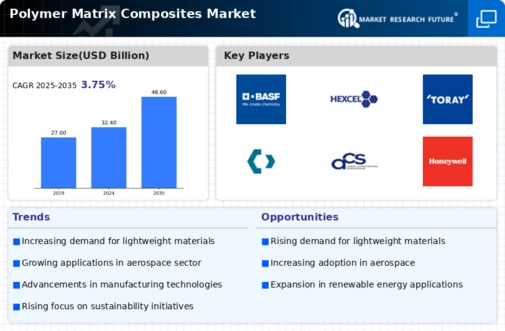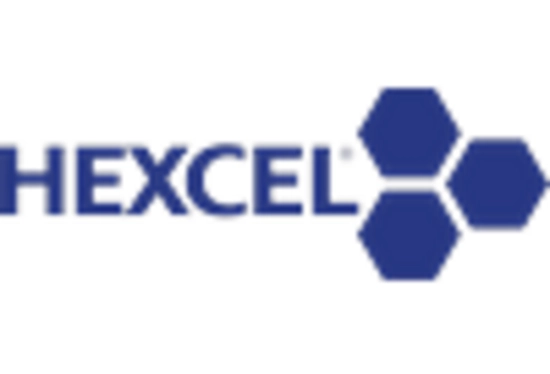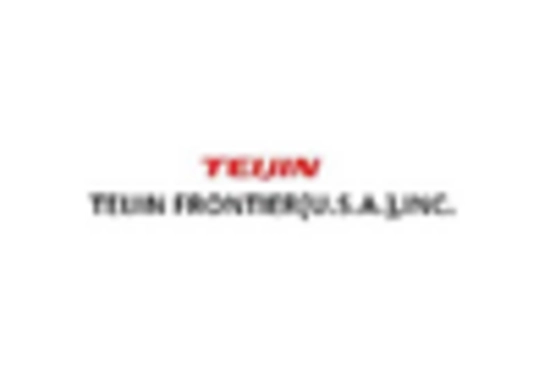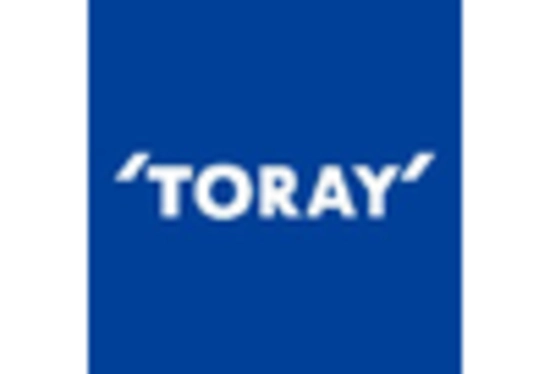Technological Innovations
Technological innovations play a pivotal role in shaping the Polymer Matrix Composites Market. Advancements in manufacturing techniques, such as 3D printing and automated fiber placement, are revolutionizing the production of composites. These technologies enable the creation of complex geometries and reduce material waste, thereby enhancing efficiency. Furthermore, the integration of smart materials and sensors into polymer matrix composites is gaining traction, allowing for real-time monitoring of structural integrity. The market is witnessing a surge in investment in these technologies, with projections indicating a potential increase in market size by approximately 15% over the next five years. This focus on innovation not only improves product performance but also expands the range of applications for polymer matrix composites.
Infrastructure Development
Infrastructure development is a crucial factor propelling the Polymer Matrix Composites Market. As urbanization accelerates, there is an increasing need for durable and lightweight materials in construction and civil engineering. Polymer matrix composites are being utilized in various applications, including bridges, buildings, and roadways, due to their superior strength-to-weight ratio and resistance to environmental degradation. The market is projected to grow by approximately 8% in this sector as governments and private entities invest in modernizing infrastructure. This trend is further supported by the push for sustainable construction practices, where polymer matrix composites can contribute to longer-lasting structures with reduced maintenance costs.
Sustainability Initiatives
The Polymer Matrix Composites Market is increasingly influenced by sustainability initiatives. As environmental concerns rise, manufacturers are compelled to adopt eco-friendly materials and processes. This shift is evident in the growing demand for bio-based composites, which are derived from renewable resources. The market for these sustainable alternatives is projected to expand significantly, with estimates suggesting a compound annual growth rate of over 10% in the coming years. Companies are investing in research and development to create composites that not only meet performance standards but also minimize environmental impact. This trend aligns with global efforts to reduce carbon footprints and promote circular economy practices, thereby enhancing the appeal of polymer matrix composites in various applications.
Rising Demand in Aerospace Sector
The aerospace sector is a significant driver for the Polymer Matrix Composites Market. The demand for lightweight and high-strength materials is paramount in aviation, as it directly impacts fuel efficiency and overall performance. Composites are increasingly utilized in aircraft components, leading to a projected market growth of around 12% in this segment alone. Major aerospace manufacturers are actively seeking to replace traditional materials with polymer matrix composites to enhance aircraft performance and reduce operational costs. This trend is further supported by regulatory pressures to improve fuel efficiency and reduce emissions, making polymer matrix composites an attractive option for future aircraft designs.
Automotive Industry Transformation
The automotive industry is undergoing a transformation that significantly impacts the Polymer Matrix Composites Market. With the rise of electric vehicles (EVs) and stringent regulations on emissions, manufacturers are seeking lightweight materials to improve energy efficiency. Polymer matrix composites offer an ideal solution, as they provide the necessary strength while reducing vehicle weight. The automotive sector is expected to witness a market growth rate of approximately 10% for polymer matrix composites in the next few years. This shift is driven by the need for enhanced performance and sustainability, as automakers strive to meet consumer demands for greener vehicles. The integration of composites into automotive design is likely to reshape the industry landscape.

















Leave a Comment